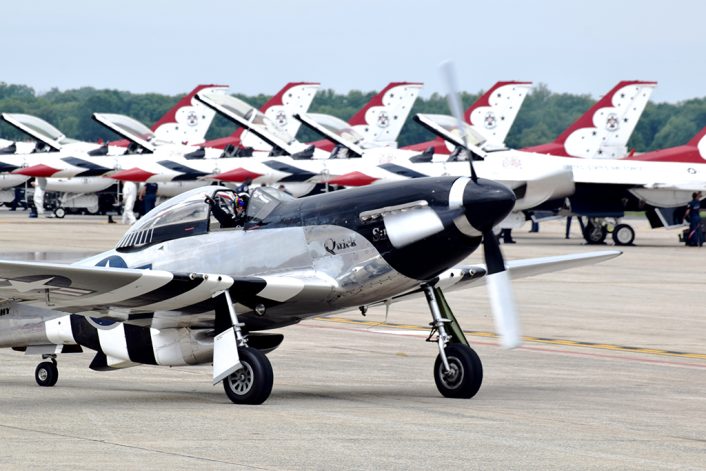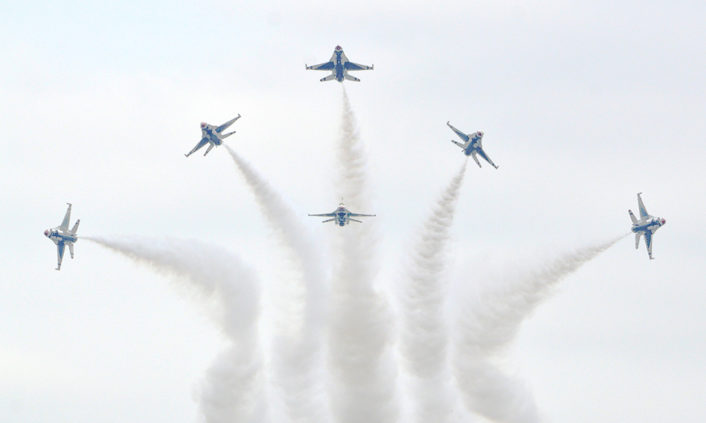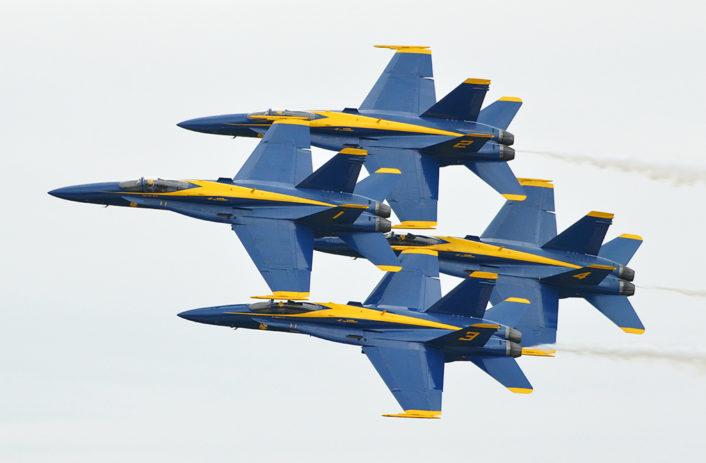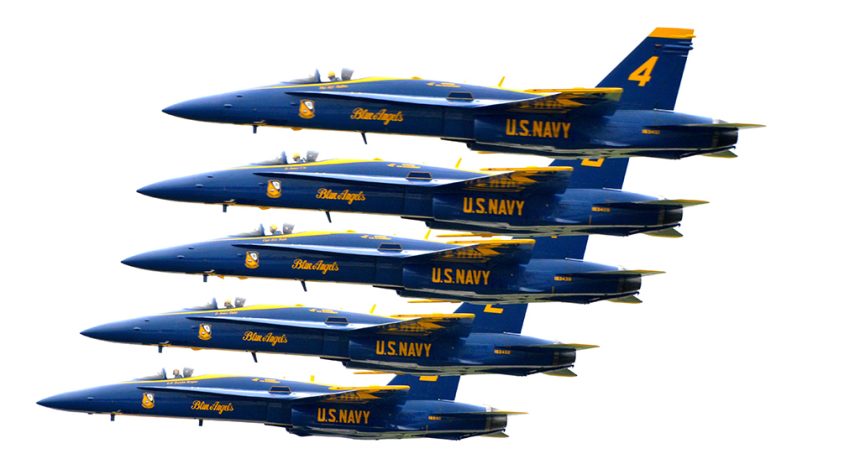Held just outside of Washington D.C., this year’s air show at Joint Base Andrews was a success if a bit rain soaked.
Officially named the Joint Base Andrews Air Show: America’s Air & Space Expo, “Legends in Flight”, the show is held every other year. The show took place May 10 – 13, with an active flight schedule and forty plus aircraft on static display.
In years past, the show was an annual event at the Joint Service Open House hosted by Andrews Air Force Base. Because of budget cuts, the show was cancelled during 2012 – 2014, as it cost approximately $2.1 million USD. In 2015, the show returned to Andrews.
The base itself, formerly known as Andrews Air Force Base, was renamed Joint Base Andrews in 2009. This was done to reflect the growing joint nature of the base with the stationing of various naval, reserve, and Air Guard units at Andrews. The base is also most famously home to Air Force One.
This year’s show was headlined by both aerial demonstration teams of the United States Air Force and the United States Navy. This was a rare treat for both the Air Force Thunderbirds and the Navy Blue Angels to perform at the same air show. The last time this occurred was back in 2007!
While the air show took place over a three day period, the attendance on the first day was restricted to: distinguished visitors, military personnel, their families and retirees. The weather for that Friday performance was outstanding. On the other hand, when the air show was open for the general public and media on Saturday, the weather could be best described as a dreary gray overcast and at times a low ceiling. Most fortunately the weather cooperated enough to ensure the bare minimum safety requirements to carry out that day’s aerial performances.
The United States Army Golden Knights parachute jump team kicked off the show. Exiting the team’s C-31 Fokker Troopship at 2,000 feet or just over 600 meters, each team member was briefly in freefall before deploying their parafoil chutes. They then maneuvered their chutes to make a precise landing on a predetermined spot.
Civilian aerobatics were carried out by: the Geico Skytypers, Team Oracle, and three time U.S. national aerobatic champion Patty Wagstaff. The warbird part of the day’s flying started with a North American B-25 Mitchell conducting multiple flyovers. Then a Vought F4U Corsair teamed up with a North American P-51 Mustang as the “Class of ‘45” demonstration team. Then each of these two aircraft thrilled the crowd as they individually beat up the field.

The Air Combat Command’s A-10C Demonstration Team flew an intense display. The Warthog pilot not only highlighted the extreme maneuverability of the A-10, but also flew simulated strafing runs. As impressive as the Warthog was, it served to warmup the crowd for the main attractions, namely the Thunderbirds and the Blue Angels.
Commanded by Lt. Col. John Caldwell, the Thunderbirds perform with six F-16s. Their show operates with two solos and an ever changing four ship formation lead by Caldwell. The team flies the Block 52 version of the F-16C/D Fighting Falcon. Though please don’t call the F-16 by that name, as the pilots and maintainers call them Vipers. The plane has been minimally modified with the replacement of the 20mm M61 Vulcan Gatling gun with a smoke generation system.

The weather marginally improved as Thunderbirds One through Four took off together in the diamond formation, immediately followed by the opposing solo Thunderbirds Five and Six. Due to safety considerations associated with the weather and low ceiling, the Thunderbirds conducted their “low” show.
Still it was spectacular as Thunderbird One led the four Vipers through variations of the: diamond, arrowhead, and trail formations. In between the four ship maneuvers, the opposing solos wowed the crowd with: knife edged, inverted and calypso passes. The solos then joined the four ship formation to form the diamond formation with all six Vipers. Even with the “low” show performance, it was an impressive demonstration of the incredible skill of these six pilots. Unfortunately the gray overcast made for some less than stellar photography.

The weather started to get worse with light rain and a steady wind as CAPT Eric Doyle lead the Blue Angels to flight. The Blues also performed a “low” show as the ceiling met the minimum 4,500 feet with visibility of least three nautical miles. On account of the “low” show, “Fat Albert”, the Blues support C-130, did not make its usual flight at the start of the performance.

The Blue Angels are the last U.S. Navy unit to operate the older model F/A-18B/Ds in the fleet. As with the Thunderbirds, the 20mm cannon has been removed to make room for the smoke generation system. The smoke is made by pumping environmentally friendly paraffin oil directly into the plane’s exhaust. The resulting smoke trails are not only used to highlight the aircraft for the spectators, but also as an increased safety measure so that the maneuvering aircraft can more easily spot one another.
The Blues four ship formation took off as one and quickly disappeared into the clouds, quickly followed by the solo aviators. They then transitioned into their signature diamond 360 formation. The opposing solos alternated with the four ship formation conducting the knife edge pass, minimum radius turns, opposing inverted pass, and a sneak pass to startle the crowd. With all six aircraft, they flew the delta formation through multiple rolls and loops until performing the delta break out.

From a photography point of view, the resulting images of the Blue Angels were better than the Thunderbirds. This was on account of the greater contrast between the dark blue color of the aircraft and the overcast. Their stunning display was that much more impressive given the weather conditions.
All in all, the 2019 Joint Base Andrews Air Show was once again a great show. While it does not have as many aircraft on static display or in flight, as compared to years past, it remains one of the top air shows in the United States. It is expected that the next show will take place in 2021, with the exact date to be determined.








